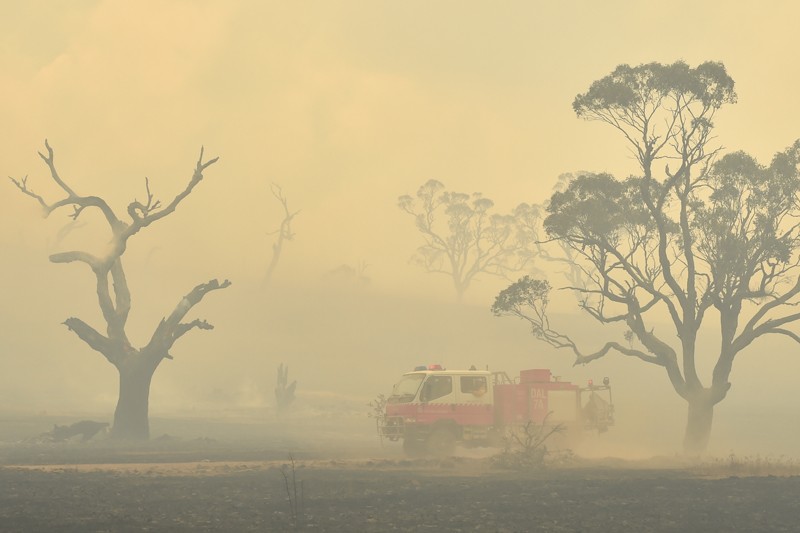Nicky Phillips
Search for this author in:
The extreme fires that razed more than 18 million hectares of bush in Australia late last year were significantly more likely because of human-induced climate change, say an international group of climate scientists who have analysed the disaster.
The researchers’ results, released today, suggest that human-induced climate change increased the risk of the weather conditions that drove the fires by at least 30%.
Australia experiences bush fires almost every summer, but the latest event was unprecedented in its severity and scale. The World Weather Attribution (WWA) project sought to measure global warming’s contribution to the dangerous bush-fire conditions experienced in southeast Australia over several months. Fires in the region were particularly severe, and killed dozens of people and destroyed thousands of homes.
“This is a highly conservative assessment,” says David Karoly, a climate scientist based in Melbourne at the Commonwealth Scientific and Industrial Research Organisation who was not involved in the analysis.
Future concerns
The group assessed bush-fire conditions with a index that tracks ‘fire weather’. This calculates the chance of fire in a location based on variables such as temperature, humidity, wind and rainfall. The analysis did not consider non-weather factors, such as how a fire started.
The researchers also say the result is conservative. Models have mostly underestimated the rise in temperatures that has been observed since the Industrial Revolution, says Geert Jan van Oldenborgh, a climate researcher at the Royal Netherlands Meteorological Institute in De Bilt, the Netherlands, and co-author of the WWA analysis.
Even accounting for model uncertainties, Karoly says that the fire conditions experienced in Australia this summer are a baseline for what is possible in the world’s current climate, which has warmed by around 1ºC compared with pre-industrial levels. But conditions are going to get a lot worse as the planet warms by another degree or two, as is expected, he says.
The team also examined whether climate change influenced two of the components that are used to measure fire-weather: extreme temperatures and drought. The results, which have not been peer reviewed, suggest that while human activity doubled the chance of heatwave conditions during the fires, the models did not show that climate change contributed to the extremely dry conditions that Australia experienced.
Observed trend
In a second analysis that used real-world observations, rather than models, the WWA project looked at changes in observed fire risk since 1979. The researchers found that the likelihood of the extreme fire risk experienced in 2019–20 has increased fourfold — and possibly by more than ninefold — between 1900 and today. The reason that the observed trend is higher than the modelled trend is because factors other than climate change, such as changes in land use, might have also contributed to increased fire risk, say the authors.
Climate change definitely played a part in the catastrophic fires, says Andy Pittman, a climate scientist at the University of New South Wales in Sydney. But he questions whether the modelling results are accurate and meaningful given that models have a limited ability to simulate fire events. For instance, models can’t simulate the drought that much of Australia has experienced over the past two and a half years or the huge amount of fuel that fed the fires — probably two major influencing factors of the event, says Pittman.
“I’ve used climate models for 30 years and I think they are hugely valuable, but this sort of study uses them in ways that I think are beyond their capability,” he says. He also thinks that fire indices, such as the fire-weather index, overemphasize temperature’s effect on fire-weather.
Friederike Otto, a climate modeller at the University of Oxford, UK, and a co-author of the WWA analysis, acknowledges that models struggle to simulate temperature extremes or droughts at a regional and local scale, but the results are conservative compared with those based on observations. “If we wait until we have perfect models, we will have a 4 ºC [warmer] world or more until we start saying anything about the real-world impacts of climate change today,” she says.
Otto also notes that such analyses help to identify problems with the models, which allows the science to evolve. “If we would continue to just do projections but never test the models against real-world events we would make slower progress. That, in my view, is the true power of event attribution,” she says.
Source: Ecology - nature.com




